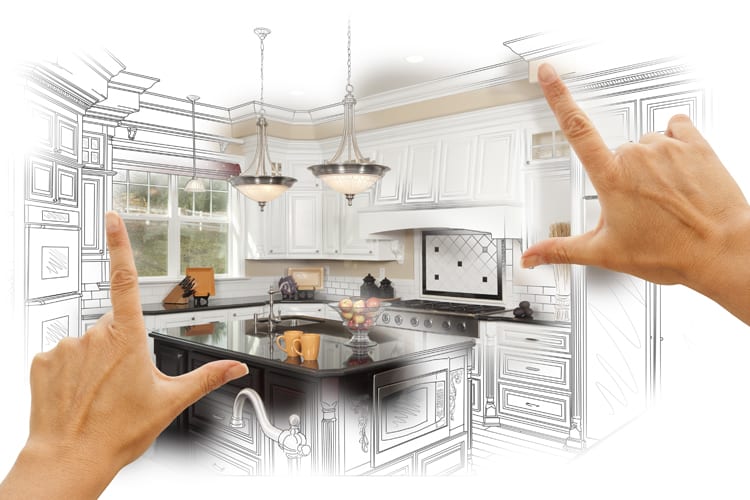Home Improvement Financing is a way for homeowners to access funds for repairs, renovations, or upgrades to their homes. It can be used for projects such as replacing a roof, installing new windows, updating electrical wiring, remodeling the kitchen or bathroom, and much more. Home Improvement Financing can be obtained through banks, credit unions, lenders, and other financial institutions. Homeowners may be able to take advantage of tax credits or deductions, depending on their circumstances. Additionally, the lender may have special financing programs available for those with good credit or a specific project in mind.
When considering Home Improvement Financing, homeowners should determine how much they need to borrow and what monthly payments are realistic. They should also consider the interest rate and any penalties associated with early repayment or late payments. Homeowners should also understand their credit score before applying for a loan to determine if they are likely to qualify.
Once a homeowner has identified the home improvement project and obtained financing, it is important to budget properly for materials and labor costs. The homeowner should also factor in additional expenses such as permits or contractor fees. The best way to ensure success is to create a detailed plan and be realistic about the budget. Home improvement projects can easily become more expensive than expected if proper planning isn’t done ahead of time.
Lastly, homeowners should always keep records of their home improvements for tax purposes. This includes receipts and proof of payment for materials or labor costs associated with the project. Keeping track of all expenses will help homeowners take advantage of any tax credits available to them.
Types of Home Improvement Financing Options
One of the most popular home improvement financing options is a traditional loan.
Traditional loan
A traditional loan is a type of home improvement financing option where an individual or business borrows money from a lender with the intention of repaying the debt, plus interest, over an agreed-upon period of time. It typically involves fixed payments on a regular basis over the life of the loan. Traditional loans are generally used for larger projects, such as building an addition to a home or replacing the roof.
Personal loan
A personal loan is another popular home improvement financing option that involves borrowing money from a lender with the intention of repaying it over an agreed-upon period of time. It typically carries lower interest rates than traditional loans and can be used for smaller projects such as replacing windows or repainting a room.
Home Equity Line of Credit (HELOC)
A Home Equity Line of Credit, or HELOC, is an attractive option for home improvement financing because it allows borrowers to draw funds against the equity in their home up to a certain amount. The interest rate on a HELOC is usually much lower than a traditional loan, and the repayment term can be extended if needed. This type of financing is ideal for larger projects that require significant amounts of cash.
Credit cards
Credit Cards are another popular home improvement financing option because they offer convenience, flexibility, and the potential to earn rewards or cash back on purchases. Homeowners should be aware, however, that this type of financing usually carries a higher interest rate than other options and can become very expensive if not managed properly.
Home improvement line of credit
A home improvement line of credit is a form of financing that allows homeowners to access funds for their home improvement projects. It typically provides a predetermined amount of money that can be used for any type of project, from large-scale renovations to small updates. With a home improvement line of credit, you can draw funds up to the limit whenever they are needed, and the repayment terms are usually flexible. This type of financing is a great option for home improvement projects that require a large amount of money upfront.
Choosing the right home improvement financing option is essential to making sure your project stays on budget and is completed in a timely manner. It’s important to evaluate each option carefully and understand the terms, repayment schedules, and interest rates associated with each. With proper planning and research, homeowners can ensure that their home improvement project is a success.
Factors to Consider When Choosing a Home Improvement Financing Option
When selecting a home improvement financing option, it is important to consider the amount of money needed for the project, the loan repayment terms and interest rates, and the potential rewards or cash back offered by credit cards. Additionally, factors such as creditworthiness, existing debt payments, and other financial obligations should also be taken into account when making a decision.
Amount of Money
The importance of budgeting when choosing a home improvement financing option cannot be overstated. It is critical to consider the amount of money needed for the project, as well as other expenses such as materials, labor costs, and permits. Additionally, it is important to understand all of the terms, repayment schedules, and interest rates associated with each financing option to ensure that the project can be completed within budget.
Loan Repayment Terms and Interest Rates
The loan repayment terms and interest rates associated with each home improvement financing option should also be carefully evaluated before making a decision. Different types of loans typically offer different payment schedules, such as fixed payments or adjustable-rate mortgages, and they can also vary in terms of the interest rate applied. Additionally, it is important to factor in any additional fees or charges that may be associated with the loan.
Credit Cards and Cash Back Rewards
Finally, for homeowners who prefer to use a credit card for their home improvement project, it is important to consider the rewards or cash-back programs offered by the card. These can be a great way to save money on your home improvement costs as long as you are able to pay off the balance in full each month.
Ultimately, taking all of these factors into consideration is essential for making an informed decision about which home improvement financing option best suits your needs. By properly researching and evaluating each option, homeowners can ensure that their project is completed within budget and on time.




